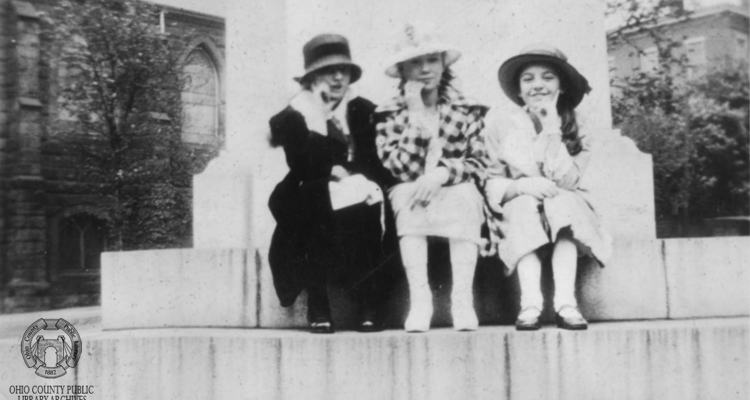Editor’s note: At Weelunk, we’re all about keeping you connected to your community. Because that looks a little different right now, we’re bringing you ways to engage while staying safe and healthy. We hope Weelunk can continue to connect you to Wheeling — no matter where you are.
“November with its melancholy days found us in quarantine lest the dread flu pay us a visit. Thanksgiving Day found us gathered in the refectory to do justice to the turkey and trimmins.’”
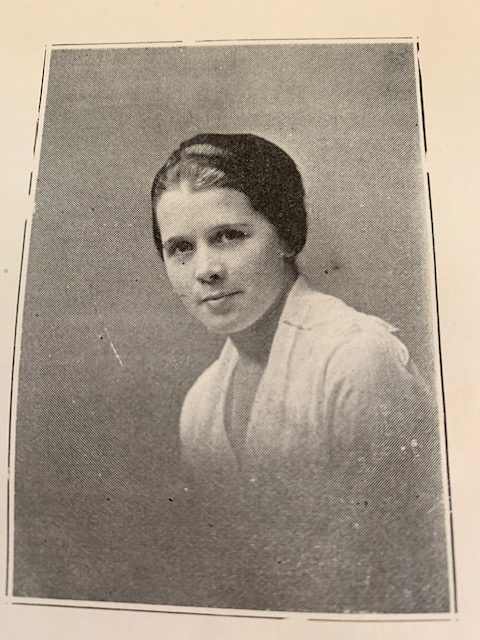
These were the recollections of a teenage girl in 1919 — Helen St. Clair was then a student at the now-closed Mount de Chantal Visitation Academy. As a graduate of the class of 1919, St. Clair couldn’t have known that 100 years later, teenagers just like herself would be facing the same situation that she and her schoolmates encountered while quarantining to slow the spread of the Spanish flu pandemic.
As I write this, we are in the midst of one of the deadliest weeks of the COVID-19 pandemic. Schools are closed, gatherings are banned, and the world seems to get “weirder” with each passing day. In 1918 and 1919, the Spanish flu pandemic infected an estimated 500 million people throughout the world, killing as many as 50 million victims by some historical estimates.
The Mount was under a “strict quarantine” from Oct. 6 to Dec. 21, 1918, with no one permitted in or out of the residential all-girls school. But here, in the words of St. Clair in 1918, “It seems like it’s just a blip on the radar, lumped in between Halloween and Christmas.”
“NBD” as the kids today would say. For teenagers facing the COVID-19 pandemic, it certainly seems to be anything but “no big deal.”
“It’s pretty surreal to not go to school every day; I’m fairly anxious about missing class time and the rescheduling and alterations of things like Advanced Placement (AP) testing. I miss seeing my friends and my extracurricular activities and clubs. However, I’m enjoying spending time with my family and sleeping in,” said Wheeling Park High School sophomore Erica Edinger, 16.
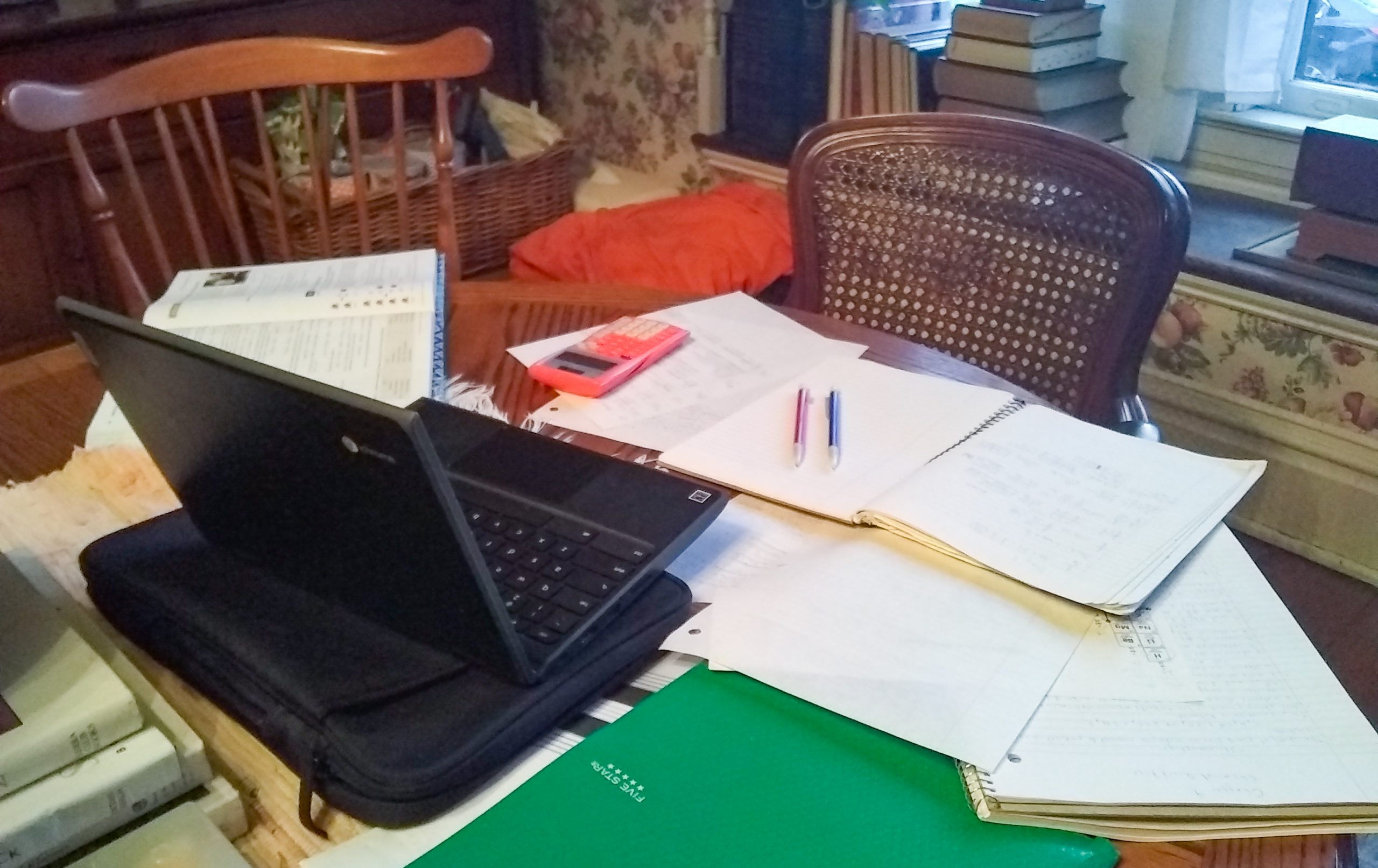
Edinger is one of three local teenagers who agreed to share thoughts on what being quarantined has meant for them and how they think teenagers 100 years ago might have coped. Kamryn Abernathy, a freshman at Shadyside High School, said she has been passing the time between schoolwork by baking and experimenting with makeup.
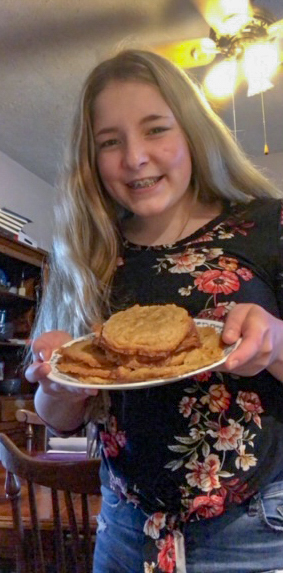
“One thing I do a lot is lay in my bed and watch Tik-Tok,” the 14-year old said in a phone interview, commenting that the cookies she’d just pulled
out of the oven hadn’t seemed to work out too well. “They’re good, but they’re falling apart.”
The “safer at home” umbrella that all of us now patiently wait beneath to protect the more vulnerable segments of our population can be especially boring for young people who are used to the rhythm of school, friends and extracurriculars.
During the Spanish flu pandemic, that wasn’t the case for most young people. With many young adults away fighting World War I or helping their families bring a paycheck at home, those under 18 were more vulnerable than they are now. Young people were the most common victims of Spanish influenza, accounting for nearly half of all flu deaths between 1918 and 1919.
Keeping himself busy with some activities that would seem familiar to teenagers back then, 14-year-old Noah Hardway has enjoyed bike riding and fishing in the last few weeks, even though he wondered how long he’d be able to keep doing either activity.
“It’s weird now,” Hardway said of how he was feeling. “I’m enjoying school being out, but it’s a little frustrating being cooped up in the house for so long.”
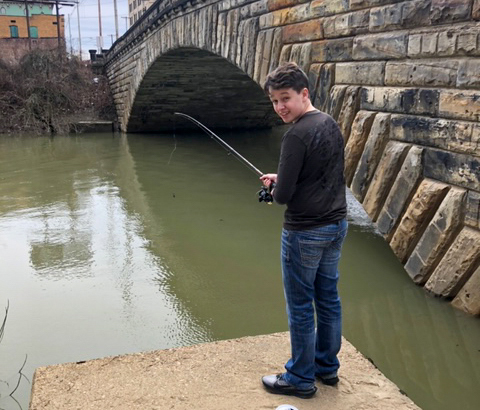
“I’m sure it was extremely difficult for them,” Edinger said of teens who were quarantined during the Spanish flu era. “Without the internet or other modern technologies, they wouldn’t be able to talk to friends or continue with schoolwork. It would be more terrifying to face a pandemic with no information of how many cases there were and where they were other than newspapers.”
Now, as history begins to write the story of this pandemic, how do these young people hope it will be remembered?
“I hope we remember how it feels to be part of the group that is less affected. If we are older, and something like the COVID-19 pandemic happens again, we should remember the feeling of making sacrifices so that we do not lash out at younger people or dismiss their feelings,” Edinger said.
Abernathy said she hopes people remember the boredom and the uncertainty of not knowing who could be affected.
“This happened because people weren’t taking care of themselves,” she said. “… If you’re sick, stay home, don’t spread it around.”
And when this finally passes — and it will — the world will move on and seem all the brighter, especially for teens who’ve been cooped up since winter. Hardway said he can’t wait to get back to face-to-face visits with friends, while Abernathy said she’s hopeful local businesses will be able to rebound. For Edinger, it’s the simplest of errands that many of us of all ages are looking forward to.
“There are a lot of things I’m looking forward to, but to be honest I really just want to go grocery shopping normally, where no one is panic-buying, and you don’t have to worry about getting sick,” she said.
• Cassie Bendel was born in Wheeling and raised in Bellaire. A graduate of St. Vincent College, she began her writing career as a reporter with The Times Leader and the Steubenville Herald-Star before writing content for SiriusXM Satellite Radio and a national faith-based consulting company. After more than a decade in Pennsylvania, she has moved back to the Ohio Valley with her husband and two sons.


